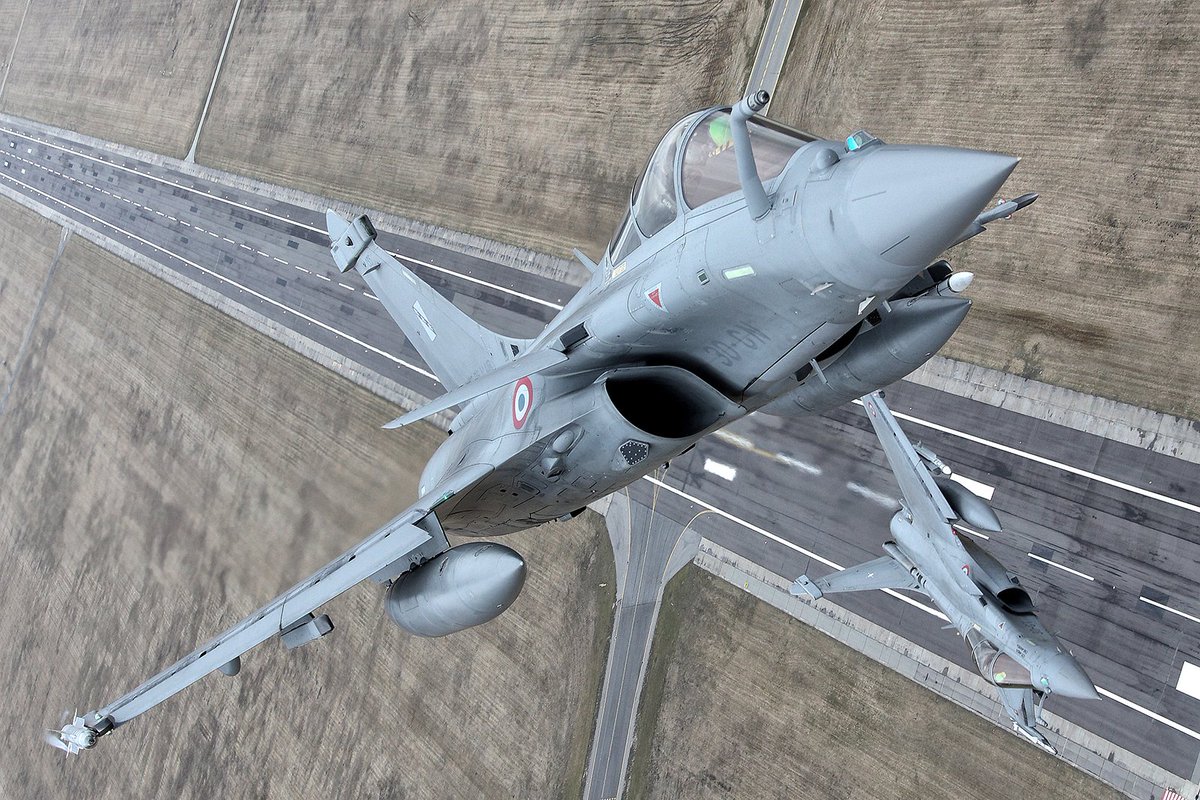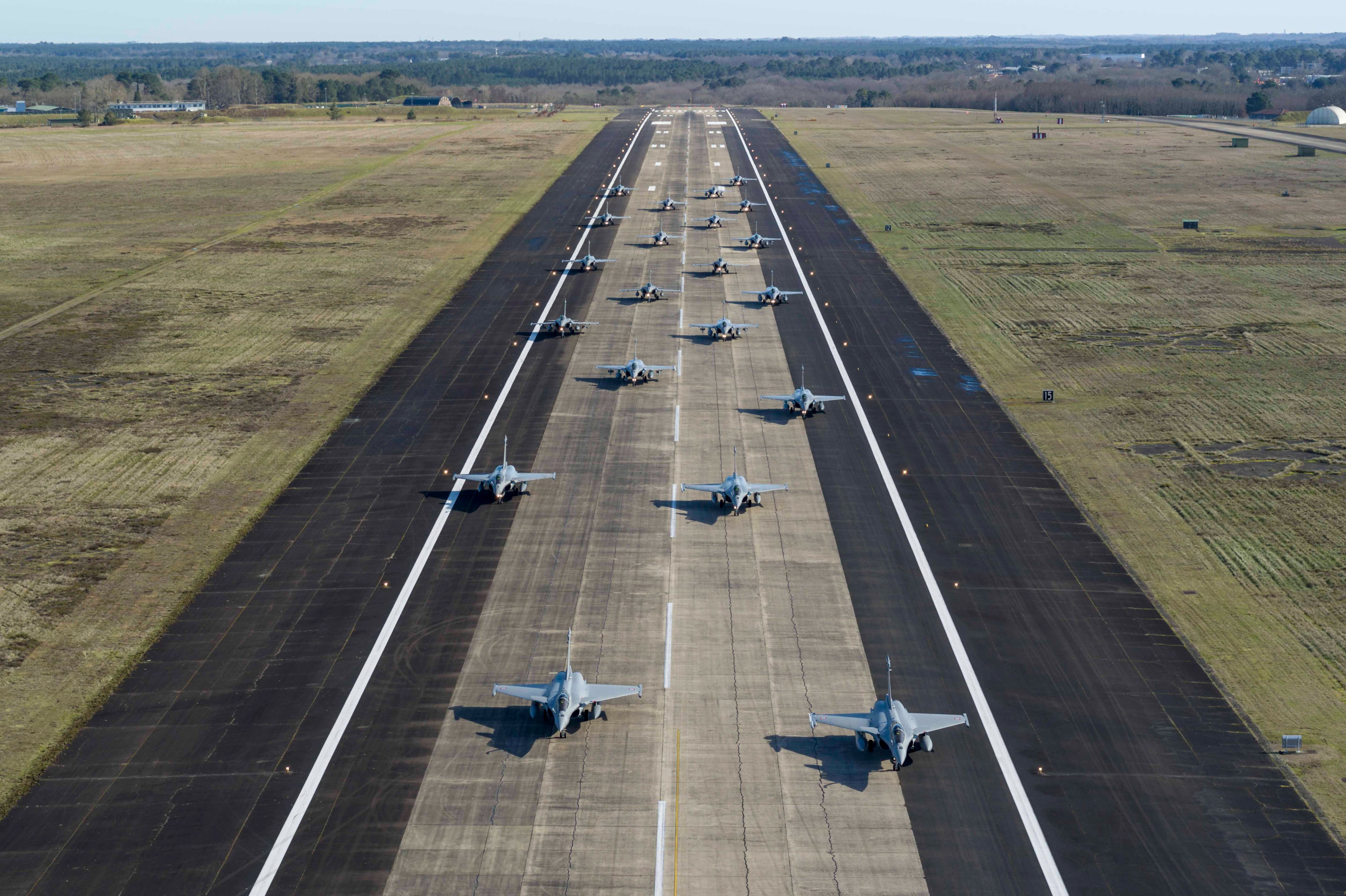21 Rafale Fighters Conduct High-Intensity Wartime Drills; French Air & Space Force Wraps Up SAPHIR

In a display of precision and operational prowess, the French Air and Space Force has wrapped up a rigorous training exercise named “SAPHIR,” which saw a significant deployment of Dassault Rafale fighter jets.
Conducted at Mont-de-Marsan Air Base 118 in southwestern France from February 12 to 16, the exercise was led by the 30th Fighter Wing of the French Air and Space Force.
The high-intensity drills aimed to enhance the operational readiness of fighter aircraft through intensive flight activities across various squadrons over a specified period.
Throughout the exercise, approximately 180 to 200 simulated combat missions were executed, testing the wing’s capability to launch an average of 20 Rafale jets daily.
This intensive training not only honed the pilots’ skills but also provided invaluable experience for ground crews in maintaining and supporting the aircraft during high-tempo operations.
One of the noteworthy events during the exercise was a stunning “elephant walk” on the second day, where 21 Rafale jets taxied in close formation before taking off at minimal intervals.
Subsequently, 18 of these jets participated in a formation flight, with three held back to maintain symmetry, demonstrating precision and coordination among the pilots.
On February 14, in a Valentine’s Day celebration, 18 Rafale fighters also performed a heart-shaped formation flight, adding a touch of flair to the exercise.
Nonetheless, this significant deployment underscores the importance of maintaining operational readiness and proficiency in the face of evolving security challenges.
Lieutenant-Colonel Laurent, commanding the “Normandie-Niémen” squadron, expressed satisfaction with the successful execution of a flight involving approximately 20 aircraft, hailing it as a testament to the dedication and professionalism of the personnel involved.
Overall, the “SAPHIR” exercise achieved its primary objectives of optimizing aircraft availability and bolstering the combat capabilities of the French 30th Wing, comprising the fighter squadrons 1/30 “Côte d’Argent,” 2/30 “Normandy-Niemen,” and 3/30 “Lorraine.”
The French Air Force also added, “The mobilization of crews and technical teams (mechanics, logisticians, and industrialists) during this large-scale exercise demonstrated the French Air and Space Force’s ability to quickly ensure effective coordination and maintenance to be ready for operations.”
France’s Dassault Rafale Fighter
The Dassault Rafale is a formidable 4.5th generation air superiority and a multirole fighter jet, showcasing versatility with single and twin-seat variants.
Designed to excel across diverse mission sets, this aircraft demonstrates prowess in air sovereignty, deep strike, close air support, intelligence, reconnaissance, surveillance (ISR), and nuclear deterrence. Its adaptability allows it to effectively engage air, ground, and sea targets based on its loadout.

Rafale fighter jet.
Equipped with advanced sensors like the Active Electronically Scanned Array (AESA) RBE2 radar, the Rafale can simultaneously track up to 40 targets and engage four of them.
The Rafale is armed with an impressive array of weaponry, featuring 14 hardpoints (13 for carrier variants), with a capacity to transport almost 20,000 pounds of ammunition. Its ability to integrate various French and international weapon systems further elevates its combat effectiveness.
From the AIM-9 Sidewinder to the METEOR beyond-visual-range air-to-air missile, the Rafale’s arsenal includes a variety of air-to-air and anti-ship missiles, as well as the capacity to carry smart and dumb bombs.

The fighter jet has an operational ceiling of 50,000 feet and can reach speeds of 1.8 Mach (750 knots).
The Rafale’s operational history began with its first flight in 2001, entering service in 2004 with the French Navy and later with the French Air Force in 2006.
The F3R version, currently the most prevalent, has seen combat action in Afghanistan, Syria, and the Sahel in Africa. The ongoing testing of the F4 version incorporates operational feedback and upgrades.
France has steadily increased its Rafale fleet, with orders totaling 234 aircraft. Notably, the Rafale’s combat-proven performance and continuous evolution underscore its position as a key player in modern air forces, reaffirming its significance on both domestic and international fronts.
While the primary customers for the Rafale are the French Air Force and Navy, the aircraft has also achieved notable success on the international stage.
Countries such as India, Qatar, Croatia, Egypt, and Greece have acquired and integrated the Rafale into their respective fleets. The UAE and Indonesia are poised to become future operators of these advanced fighter jets.
- Questions and Answers
- Opinion
- Story/Motivational/Inspiring
- Technology
- Art
- Causes
- Crafts
- Dance
- Drinks
- Film/Movie
- Fitness
- Food
- Spiele
- Gardening
- Health
- Home
- Literature
- Music
- Networking
- Other
- Party
- Religion
- Shopping
- Sports
- Theater
- Wellness
- News
- Culture
- War machines and policy

